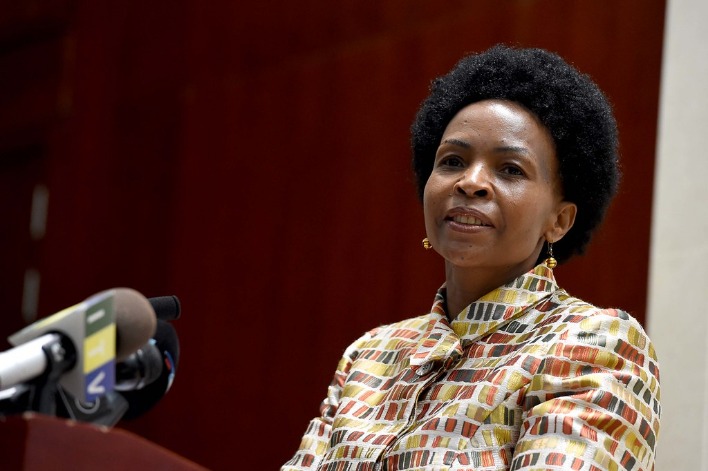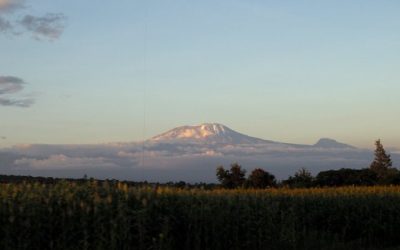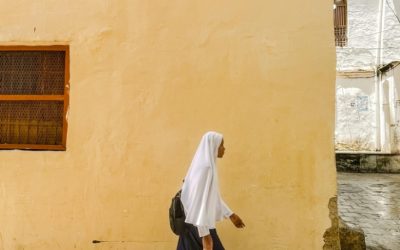Geography and Climate of Tanzania
Geography and climate of Tanzania play a vital role in shaping the country’s diverse natural landscape and ecosystems. Located in East Africa, Tanzania is characterized by vast plains, majestic mountains, and extensive coastlines along the Indian Ocean. The country’s climate varies from tropical along the coast to more temperate and alpine in the inland highlands, supporting a rich variety of flora and fauna. These geographical features and climate zones contribute to Tanzania’s status as a prominent destination for wildlife safaris and eco-tourism.
Topography and Landforms
Tanzania, located in East Africa, features diverse geography and climate that significantly influence its environment and human activities. The country is characterized by a mixture of savannahs, mountains, and coastal plains, creating a varied landscape. Its climate varies from tropical on the coast to temperate in the highland areas, with distinct wet and dry seasons that support rich biodiversity.
The topography of Tanzania includes several prominent landforms such as the Great Rift Valley, which runs from the north to the south, creating a series of deep valleys and highlands. Notable features include Mount Kilimanjaro, the highest peak in Africa, and Mount Meru, both towering above the surrounding plains. The country also comprises extensive plains, including the Serengeti Plains, famous for wildlife migration, and coastal lowlands along the Indian Ocean. These landforms contribute to Tanzania’s reputation as a country of remarkable natural beauty and ecological diversity.
Climate Zones and Weather Patterns
Tanzania, located in East Africa, features diverse geography and climate zones that contribute to its rich natural landscape. The country is characterized by coastal plains, volcanic mountains, highlands, and vast savannahs, including part of the Serengeti ecosystem. Its geographical diversity significantly influences local weather patterns and climate conditions.
The climate of Tanzania varies across different regions. The coastal areas and islands experience a tropical climate with high humidity and temperatures, along with a distinct rainy season from November to May. The central and northern highlands enjoy a cooler climate due to their elevation, with temperatures often being milder, especially during the dry season. The Serengeti and other plains have a typical savannah climate with warm temperatures year-round and seasonal rainfall that supports abundant wildlife.
Climate zones in Tanzania include tropical rainforest along the coast, a savannah zone dominating the central plains, and temperate highland areas in the mountains. The weather patterns are largely influenced by the Intertropical Convergence Zone, monsoon winds, and the movement of the ITCZ, which bring rains during the wet seasons and dry conditions during the rest of the year. The variability in rainfall and temperature across these zones is crucial for agriculture, wildlife, and local communities.
Historical Background of Tanzania
Tanzania, located in East Africa, has a rich and complex historical background shaped by ancient civilizations, colonial influences, and its journey to independence. The region was once part of the powerful Kingdom of Kilwa and later experienced Arab and Portuguese colonization. In the late 19th century, it became a German colony known as German East Africa, followed by British rule after World War I. Tanzania gained independence in 1961 and has since evolved into a nation known for its diverse cultures, stunning landscapes, and significant role in regional politics.
Pre-Colonial History
Tanzania’s pre-colonial history is rich and diverse, reflecting a tapestry of cultures and civilizations that have inhabited the region for centuries. Before European contact, the area was home to various ethnic groups and thriving city-states, including the coastal Swahili city-states known for their trade and commerce with Arab and Persian merchants. Inland, powerful kingdoms such as the Great Zimbabwe and the ancient kingdoms of the Lake Tanganyika region played significant roles in regional politics and economics. The mainland was also inhabited by Bantu-speaking tribes who engaged in farming, hunting, and ironworking, contributing to the development of complex societies. These early communities laid the foundations for the cultural and social structures that would later influence modern Tanzania. Understanding this rich pre-colonial background highlights the diverse origins of the nation and underscores the importance of indigenous histories in shaping today’s Tanzanian identity.
Colonial Era and Independence
Tanzania, located in East Africa, has a rich and complex historical background shaped by indigenous cultures, external influences, and significant political changes. The region was originally inhabited by various Bantu-speaking communities who built vibrant societies and traded across the Indian Ocean. During the late 19th century, Tanzania was colonized by Germany, becoming German East Africa, which introduced new administrative systems and infrastructure. After World War I, the territory was administered by Britain under a League of Nations mandate, and later a United Nations trust territory, enduring further colonial policies that impacted local societies. The struggle for independence grew over time, with prominent leaders advocating for self-rule and autonomy.
Tanzania gained independence from British rule on December 9, 1961, initially as Tanganyika. The country experienced political consolidation under Julius Nyerere, who promoted African socialism and unity among diverse ethnic groups. The union of Tanganyika and Zanzibar in 1964 formed the modern state of Tanzania, marking a significant milestone in its journey toward sovereignty. The post-independence era was characterized by efforts to build a unified national identity, economic development initiatives, and maintaining stability despite challenges. Today, Tanzania continues to reflect its colonial past while striving towards progress and development as a sovereign nation in Africa.
Post-Independence Developments
Tanzania’s history is deeply rooted in its rich cultural heritage and colonial past. Before independence, the region was known as Tanganyika and was a German colony, later administered by the British after World War I. The struggle for independence gained momentum in the 1950s and 1960s, culminating in Tanganyika achieving sovereignty in 1961. Zanzibar, an important island archipelago, gained independence in 1963, and the two entities united in 1964 to form the United Republic of Tanzania. Post-independence, Tanzania embarked on a path of socialist development under President Julius Nyerere, emphasizing ujamaa, a form of African socialism focused on communal living and self-reliance.
Following Nyerere’s leadership, Tanzania faced economic challenges, but the country continued to pursue policies of panafricanism and regional integration, establishing organizations like the East African Community. The government implemented reforms aimed at rural development, education, and health sectors, striving to improve the living standards of its citizens. Over the years, Tanzania transitioned from a one-party system to multi-party democracy in the 1990s, fostering political diversity and encouraging economic liberalization. Today, Tanzania is recognized for its efforts to promote stability, unity, and sustainable growth amid ongoing social and economic development challenges.
Political Structure and Governance
Africa, and specifically Tanzania, boasts a diverse political landscape characterized by a stable government structure and active governance institutions. Tanzania operates as a republic with a multi-party system, emphasizing democratic principles, representation, and the rule of law. Understanding its political structure provides valuable insight into how governance influences development, social stability, and the nation’s role within the broader African continent.
Government System
The political structure and governance of Tanzania are characterized by a unitary presidential system that ensures centralized authority while maintaining democratic principles. Tanzania operates under a framework where the President is both the head of state and government, playing a crucial role in executive decision-making. The governance system is designed to promote stability, development, and democratic participation across the nation.
- The President of Tanzania is elected through a multi-party system and holds significant executive power, including appointing ministers and setting national policies.
- The Tanzanian Parliament consists of two chambers: the National Assembly, responsible for lawmaking and oversight, and the Zanzibar House of Representatives, which governs the semi-autonomous Zanzibar archipelago.
- Local governance is structured through regional and district councils, allowing for decentralized administration and service delivery.
- Political pluralism is upheld, with multiple political parties participating in elections, though the ruling Chama Cha Mapinduzi (CCM) has historically maintained dominance.
- The judiciary operates independently, ensuring the rule of law and safeguarding constitutional rights for all citizens.
Administrative Divisions
Tanzania has a decentralized political structure with a division of power among various levels of government, ensuring regional representation and administrative efficiency. The country operates under a unitary republic framework with a President as the head of state and government, supported by the legislative and judiciary branches. Governance is marked by a multi-party political system, promoting democratic principles and political participation.
- Country Type: Unitary republic with decentralized administrative authority
- Presidential System: President is both head of state and government
- Legislature: Bicameral Parliament consisting of the National Assembly and the Zanzibar House of Representatives
- Decentralization: Power delegated to regional, district, and local government councils
- Administrative Divisions:
- Regions: Tanzania is divided into 31 regions, each headed by a Regional Commissioner
- Districts: Regions are subdivided into districts to facilitate local governance
- Local Authorities: District councils, municipal councils, and town councils manage local affairs
Major Political Parties
Tanzania’s political structure is a unitary republic with a presidential form of government. The President serves as both the head of state and the head of government, elected by popular vote for a five-year term. The Parliament of Tanzania is bicameral, comprising the National Assembly and the Zanzibar House of Representatives, which collectively oversee legislative activities and national governance. The judiciary is independent, with the High Court and Court of Appeal serving as the highest courts in the country. The government operates through various ministries and local government authorities, ensuring centralized administration while allowing regional decentralized governance.
Major political parties in Tanzania include the Chama Cha Mapinduzi (CCM), which has been the dominant party since independence and has held power for several decades. The Chama Cha Demokrasia na Maendeleo (CHADEMA) is the main opposition party advocating for democratic reforms and greater political accountability. Other notable parties include the Civic United Front (CUF) and the Alliance for Change and Transparency (ACT-Wazalendo). These parties participate in elections and contribute to the political diversity and democratic process in the country.
Economy of Tanzania
The economy of Tanzania is characterized by a diverse mix of agricultural, industrial, and service sectors that contribute to its growth and development. As one of the largest economies in East Africa, Tanzania benefits from rich natural resources, including minerals and fertile land, which support its agricultural exports. The country has also been expanding its infrastructure and tourism industry, aiming to boost economic stability and improve living standards for its population.
Key Sectors: Agriculture, Mining, Tourism
The economy of Tanzania is primarily driven by key sectors such as agriculture, mining, and tourism, which contribute significantly to the country’s development and employment opportunities. Agriculture remains the backbone of the Tanzanian economy, employing the majority of the population and producing crops like maize, coffee, tea, and tobacco for both domestic consumption and export. The mining sector is vital as well, with Tanzania rich in minerals like gold, diamonds, and gemstones, making it a notable player in the regional mineral industry. Tourism is another crucial sector, attracting visitors to its diverse wildlife, national parks, and historic sites, which generates substantial revenue and fosters local business growth. Overall, these sectors form the foundation of Tanzania’s economic growth and development, supporting its vision for a more prosperous future.
Economic Challenges and Opportunities
The economy of Tanzania is primarily driven by agriculture, which employs the majority of the population and contributes significantly to the country’s GDP. Over recent years, Tanzania has experienced steady economic growth, supported by sectors such as mining, tourism, and manufacturing. The government has prioritized infrastructure development and investment in energy to foster economic expansion and improve living standards.
Despite these positive trends, Tanzania faces several economic challenges. These include limited access to quality education and healthcare, inadequate infrastructure, and high levels of poverty and unemployment. Additionally, reliance on rain-fed agriculture makes the economy vulnerable to climate change and droughts, impacting food security and income levels.
However, Tanzania presents numerous opportunities for economic development. Its rich natural resources, including minerals, wildlife, and coastal tourism sites, offer potential for sustainable growth. The country’s strategic location and expanding ports facilitate trade within East Africa and beyond. Moreover, reforms aimed at improving the business environment and attracting foreign investment could significantly boost sectors like manufacturing, tourism, and agriculture, paving the way for a more diverse and resilient economy.
Foreign Investment and Development Projects
The economy of Tanzania is one of the fastest-growing in East Africa, driven by sectors such as agriculture, mining, tourism, and manufacturing. The country has made significant progress in stabilizing its economy and reducing poverty levels over recent years. Foreign investment plays a vital role in Tanzania’s development, with areas such as infrastructure, energy, and agriculture attracting substantial international capital. The government actively encourages foreign direct investment through policies and incentives aimed at fostering a conducive business environment. Several large-scale development projects are underway, including infrastructure upgrades like roads, ports, and power plants, to support economic growth and improve connectivity. Moreover, initiatives like the Standard Gauge Railway and the expansion of ports are pivotal in enhancing trade and regional integration. These efforts collectively aim to diversify the economy, create employment opportunities, and promote sustainable development in Tanzania and the broader African region.
Culture and Society
Culture and society in Tanzania are rich and diverse, reflecting the country’s unique history, traditions, and ethnic backgrounds. As a melting pot of over 120 distinct ethnic groups, Tanzania’s cultural landscape is vibrant and dynamic, influencing everything from music and dance to language and daily life. Understanding these cultural elements provides valuable insights into the social fabric of this East African nation.
Ethnic Diversity and Languages
Africa, particularly Tanzania, is a vibrant tapestry of culture and society, shaped by a rich history and diverse influences. The country is home to numerous ethnic groups, each contributing unique traditions, customs, and social practices that collectively define Tanzania’s cultural identity. These ethnic communities, such as the Maasai, Sukuma, and Chaga, preserve their distinct languages, dress, music, and dance, creating a rich mosaic of cultural expressions.
Tanzania recognizes a multitude of languages spoken across the nation, with Swahili serving as the official language and lingua franca that unites its diverse population. English is also widely used, especially in education and government institutions. Beyond these official languages, over 120 indigenous languages are spoken by various ethnic groups, reflecting the country’s incredible linguistic diversity and serving as vital aspects of cultural heritage and identity.
This diversity fosters a society that celebrates tolerance, inclusion, and shared traditions. Cultural festivals, local customs, and oral storytelling remain integral to community life, making Tanzania a fascinating case of how language and ethnicity influence societal development and cohesion in Africa.
Traditional Customs and Practices
Traditional customs and practices in Tanzania are an integral part of the country’s rich cultural heritage. These traditions vary among the numerous ethnic groups, such as the Maasai, Chaga, Sukuma, and Haya, each with unique cultural expressions that have been preserved through generations. These customs influence various aspects of daily life, social structure, and community celebrations, fostering a strong sense of identity and unity among Tanzanians.
- Communal ceremonies and rituals play a vital role in marking significant life events like birth, marriage, and initiation rites.
- The Maasai people are renowned for their distinctive dress, which includes shukas and beaded jewelry, and their warrior traditions.
- Traditional music and dance are commonly performed during festivals and communal gatherings, reflecting the history and beliefs of different groups.
- Many communities uphold traditional crafts such as beadwork, wood carving, and pottery, which are passed down through generations.
- Respect for elders and the importance of communal decision-making are core values embedded deeply in Tanzanian society.
While modernization and urbanization influence Tanzanian society, many ethnic groups actively maintain their customs, ensuring that the vibrant cultural practices continue to thrive and shape Tanzania’s social fabric.
Festivals and Cultural Events
Culture and society in Tanzania are deeply rooted in a rich tapestry of traditions, customs, and diverse ethnic backgrounds. The country is known for its vibrant cultural diversity, with over 120 ethnic groups, each contributing unique practices, languages, and beliefs to the national identity. This diversity fosters a strong sense of community and collective heritage that is celebrated through various festivals and cultural events throughout the year.
Festivals and cultural events in Tanzania serve as important occasions to honor traditional customs, religious practices, and historical milestones. One of the most prominent is the Maulidi Festival, celebrating the birth of the Prophet Muhammad, observed with processions, prayers, and cultural displays. The Sauti za Busara music festival held in Zanzibar showcases the continent’s musical talents, blending traditional rhythms with contemporary sounds and attracting visitors from around the world. Additionally, the Ngoma Festival highlights music, dance, and storytelling from different ethnic groups, providing a vivid display of Tanzania’s rich cultural mosaic.
These festivals not only serve as platforms for cultural expression but also promote tourism and unity among diverse communities. They foster pride among Tanzanians and offer visitors an authentic glimpse into the nation’s cultural wealth, making Tanzania a remarkable example of vibrant traditions and lively cultural celebrations in Africa.
Biodiversity and Natural Resources
Biodiversity and natural resources are vital components of Tanzania’s rich environmental heritage. As one of Africa’s most biologically diverse countries, Tanzania boasts a wide variety of ecosystems, from savannahs and forests to lakes and mountains. These natural resources not only support a vast array of wildlife and plant species but also play a crucial role in the economy and cultural heritage of the nation. Protecting this biodiversity is essential for sustainable development and the well-being of future generations in Tanzania.
Wildlife and National Parks
Africa, particularly Tanzania, is renowned for its rich biodiversity and abundant natural resources, which are essential for both ecological balance and economic development. The country’s diverse wildlife and expansive national parks attract millions of tourists annually, contributing significantly to its income. Protecting these natural treasures is vital for sustaining the ecosystem and supporting local communities.
- Tanzania is home to some of Africa’s most famous wildlife reserves, including Serengeti National Park, Ngorongoro Conservation Area, and Selous Game Reserve.
- The Serengeti is renowned for its annual wildebeest migration, offering spectacular views of predator-prey interactions and a vibrant ecosystem.
- Wildlife conservation efforts in Tanzania focus on protecting endangered species such as elephants, lions, rhinoceroses, and cheetahs.
- Natural resources like minerals, forests, and water bodies play a crucial role in the country’s economy, supporting industries such as mining, forestry, and agriculture.
- Efforts are underway to promote sustainable tourism and conserve biodiversity, balancing economic growth with ecological preservation.
Conservation Efforts
Biodiversity and natural resources in Tanzania are among the richest in Africa, making the country a vital hub for conservation efforts. With diverse ecosystems ranging from savannas and forests to mountains and lakes, Tanzania houses numerous endemic and endangered species, underscoring the importance of sustainable management and preservation.
- Pioneering conservation initiatives such as the Serengeti National Park and Ngorongoro Conservation Area aim to protect wildlife and their habitats from threats like poaching and habitat destruction.
- The government collaborates with local communities and international organizations to promote eco-tourism as a means to generate revenue while conserving natural resources.
- Community-based natural resource management programs empower local populations, encouraging sustainable practices that benefit both people and ecosystems.
- Efforts are also underway to combat illegal hunting and trafficking of wildlife, especially for iconic species like elephants and lions.
- Research and monitoring activities are conducted to better understand biodiversity trends and to develop effective conservation strategies tailored to Tanzania’s unique environment.
Flora and Fauna
Africa, particularly Tanzania, is renowned for its incredible biodiversity and rich natural resources. The country boasts a wide variety of flora and fauna, making it a vital region for conservation and ecological studies. Tanzania’s landscapes, ranging from savannahs and wetlands to forests and mountains, provide diverse habitats that support numerous species.
The flora of Tanzania includes lush tropical forests, acacia trees, baobabs, and various endemic plant species that thrive in different climatic zones. These plants play a crucial role in sustaining the local ecosystems and supporting wildlife populations. The fauna of Tanzania is equally impressive, with iconic animals such as elephants, lions, giraffes, rhinoceroses, and cheetahs found in national parks like Serengeti and Ngorongoro Crater.

Natural resources in Tanzania encompass minerals, forests, and wildlife, which are vital for the country’s economy and livelihoods. However, rapid human activities and poaching pose threats to the delicate balance of its ecosystems. Conservation efforts are essential to protect Tanzania’s extraordinary biodiversity for future generations, ensuring that these natural treasures continue to thrive and contribute to global ecological stability.
Tourism in Tanzania
Tourism in Tanzania is a vibrant and significant industry that offers visitors an unforgettable experience of Africa’s natural beauty and rich wildlife. With renowned destinations such as the Serengeti National Park, Mount Kilimanjaro, and the Ngorongoro Crater, Tanzania attracts travelers from around the world eager to witness its stunning landscapes and diverse ecosystems. The country’s unique cultural heritage and warm hospitality further enhance its appeal as a premier African travel destination.
Major Tourist Attractions
Tourism in Tanzania is a rich and diverse experience, attracting visitors from around the world with its stunning natural landscapes, abundant wildlife, and vibrant cultures. The country is renowned for its incredible national parks and game reserves that offer unforgettable safaris and close encounters with wildlife. Visitors can explore vast plains teeming with elephants, lions, giraffes, and other iconic animals, making Tanzania a premier destination for adventure and nature enthusiasts.
Major tourist attractions in Tanzania include the Serengeti National Park, famous for the annual Great Migration of millions of wildebeest and zebras. Mount Kilimanjaro, the highest peak in Africa, draws climbers and trekkers seeking a challenging ascent. Ngorongoro Crater, a UNESCO World Heritage site, is a natural wonder and one of the best places to view wildlife densities. Zanzibar, an idyllic island off the coast, offers pristine beaches, vibrant coral reefs, and a rich history reflected in Stone Town. Other notable sites include Tarangire National Park, Lake Manyara, and the Selous Game Reserve, each providing unique landscapes and wildlife experiences. Overall, Tanzania offers a captivating blend of adventure, nature, and cultural heritage that makes it a must-visit destination in Africa.
Tourist Infrastructure and Accessibility
Tanzania is renowned for its rich biodiversity, stunning landscapes, and iconic wildlife reserves, making it a popular destination for international tourists. The country’s tourism sector is centered around attractions such as the Serengeti National Park, Mount Kilimanjaro, Ngorongoro Crater, and Zanzibar’s beautiful beaches. These sites attract nature lovers, adventure seekers, and cultural enthusiasts alike, contributing significantly to Tanzania’s economy.
Tourist infrastructure in Tanzania has been steadily improving, with major national parks and tourist hotspots equipped with lodges, hotels, and transportation facilities. Government and private sector investments have enhanced accommodations, from luxury resorts to budget campsites, ensuring a range of options for visitors. Additionally, Tanzania has developed organized tour services, guiding companies, and safari operators to facilitate smooth travel experiences.
Accessibility to Tanzania has been facilitated through international airports such as Julius Nyerere International Airport in Dar es Salaam and Kilimanjaro International Airport, which connect the country to major global hubs. Overland transportation options include well-maintained roads, local airlines, and organized tours that enable travelers to reach remote parks and attractions efficiently. Overall, Tanzania offers good accessibility for tourists, supporting both regional and international travel needs while continuously working to expand and improve its tourism infrastructure.
Impact of Tourism on Local Communities
Tourism in Tanzania plays a vital role in the country’s economy and offers substantial benefits to local communities. It attracts visitors from around the world to explore its renowned national parks, such as Serengeti and Ngorongoro Crater, as well as Mount Kilimanjaro. The influx of tourists creates employment opportunities and encourages the development of small businesses, including lodges, tour guides, and craft markets. However, the impact of tourism on local communities can be both positive and challenging. While it provides economic growth and cultural exchange, it also poses risks such as environmental degradation, cultural commodification, and social displacement. Managing sustainable tourism practices is essential to ensure that the benefits outweigh the drawbacks, ultimately supporting the well-being of local communities while preserving Tanzania’s rich natural and cultural heritage.
Education and Healthcare Systems
Education and healthcare systems play a vital role in shaping the development and well-being of Tanzania, a country in Africa. These sectors are essential for fostering social progress, reducing inequality, and improving the quality of life for its citizens. Despite facing numerous challenges, ongoing efforts aim to strengthen these systems to ensure better access, quality, and sustainability for the future.
Educational Institutions and Literacy Rates
Education and healthcare systems in Tanzania are vital components of the country’s development agenda. Efforts have been made to expand access to quality education across urban and rural areas, with particular focus on increasing literacy rates and reducing disparities. Tanzania’s educational institutions include primary, secondary, and higher education establishments, striving to equip learners with essential skills and knowledge. Despite progress, challenges remain, such as resource limitations and infrastructure gaps that hinder universal access to quality education.
Literacy rates in Tanzania have improved over the years, reflecting increased enrollment and government initiatives aimed at promoting literacy among children and adults. The government continues to invest in education programs, teacher training, and community outreach to ensure more citizens can achieve literacy, thus empowering individuals and contributing to economic growth. The healthcare system also plays a crucial role in supporting the well-being of the population, with ongoing efforts to improve access, quality, and coverage, particularly in rural regions where healthcare facilities are often scarce.
Healthcare Infrastructure and Challenges
Education and healthcare systems in Tanzania face numerous challenges but are vital for the country’s development. Access to quality education remains limited in rural areas, with many children unable to attend school due to poverty and inadequate infrastructure. The healthcare system struggles with insufficient resources, a shortage of skilled health workers, and limited access to essential medicines, especially in remote regions. Despite government efforts to improve these sectors, disparities persist, impacting overall health and educational outcomes. Strengthening healthcare infrastructure and investing in education are crucial for fostering sustainable growth and improving the quality of life for Tanzanians.
Future Outlook and Development Goals
As Tanzania continues to grow and evolve, its future outlook is shaped by ambitious development goals aimed at promoting sustainable progress and improving the quality of life for its citizens. With a focus on economic growth, infrastructure development, education, and healthcare, the nation strives to harness its resources and potential to create a prosperous and more equitable society. These goals reflect Tanzania’s commitment to becoming a key player on the African continent and beyond.
Vision 2025 and Sustainable Development
Tanzania’s Future Outlook and Development Goals are centered around sustainable growth, technological advancement, and social progress, aligning with the Vision 2025 framework. The nation aims to improve infrastructure, enhance healthcare, and promote industrialization to foster economic stability. As part of its commitment to Sustainable Development, Tanzania emphasizes renewable energy, environmental conservation, and equitable resource distribution to ensure long-term prosperity for its citizens.
Vision 2025 envisions transforming Tanzania into a middle-income country with a competitive economy, a well-educated populace, and a cohesive society. It supports initiatives that boost agriculture, tourism, and manufacturing sectors, creating job opportunities and reducing poverty. The development goals also include strengthening governance, enhancing education and innovation, and improving access to quality health services.
Through strategic investments and international partnerships, Tanzania aspires to achieve sustainable development that benefits all segments of society. By prioritizing inclusive growth and resilience to climate change, the country is working toward a future where economic progress aligns with social welfare and environmental integrity, securing a prosperous and sustainable Tanzania for generations to come.
Regional and Global Partnerships
The future outlook for Tanzania’s development emphasizes sustainable growth, economic diversification, and enhanced regional integration. The nation aims to capitalize on its natural resources and strategic location to attract investments and foster technological innovation. Development goals focus on improving infrastructure, healthcare, education, and fostering inclusive economic opportunities for all citizens. Regional and global partnerships play a crucial role in driving these initiatives, with collaboration efforts in trade, infrastructure projects, and capacity building. Tanzania continues to strengthen relationships within the East African Community and beyond, aligning with international organizations to ensure sustainable development and shared prosperity for the continent. By leveraging regional cooperation and global partnerships, Tanzania is positioned to achieve long-term stability and development goals that benefit its population and contribute to Africa’s overall progress.





0 Comments